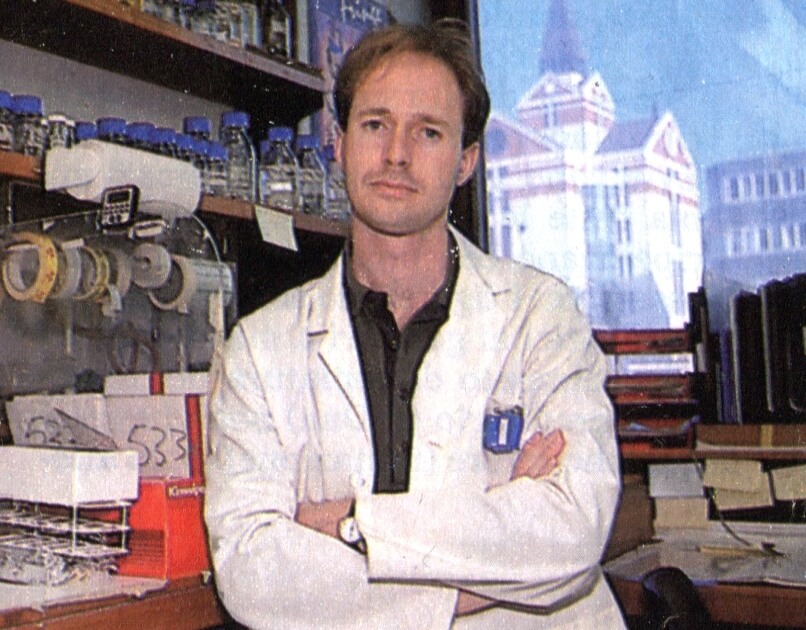Twenty-five years since the discovery of the human sex determining gene

This week marks 25 years since Murdoch Children's Deputy Director, Professor Andrew Sinclair and team identified the long sought after Y-chromosome linked Sex determining Region Y gene, SRY.
This gene triggers testis development in the embryo resulting in a male phenotype in humans and almost all mammals. His paper in Nature (19 July, 1990) received worldwide press coverage and is now regarded as a milestone in genetics, a Thompson “citation classic”, achieving more than 2,000 citations and remaining highly cited to this day.
The discovery of SRY has also been fundamental to understanding differences of sex development (DSD). Sex can be much more complicated than it at first seems. According to the simple scenario, the presence or absence of a Y chromosome is what counts: with it, you are male, and without it, you are female. However researchers have known that some people are in a ‘grey’ area; their sex chromosomes say one thing, but their sexual anatomy says another. Five weeks into development, a human embryo has the potential to form both male and female anatomy. At six weeks, the gonad switches on the developmental pathway to become an ovary or a testis. A disruption or change to this process can have dramatic effects on an individual’s sex. Gene mutations affecting gonad development can result in a person with XY chromosomes developing typically female characteristics while XX individuals may develop along male lines.
After the discovery of SRY, Professor Sinclair then went on to prove that SRY was, indeed, the human sex determining gene by finding XY female patients with mutations in the critical region of the SRY gene. This showed that SRY was required for normal testis development. He defined the transcriptional unit of SRY and showed that it could act as a transcriptional activator. The group established that the small DNA-binding and bending region of SRY was its active site, and nearly all of the sex reversing mutations in this gene had mutations in this site. Subsequently, researchers found that by itself, the SRY gene can switch the gonad from ovarian to testicular development. For example, XX individuals who carry a fragment of the Y chromosome that contains SRY develop testes and become males. The discovery of SRY was pivotal for the understanding the whole developmental pathway of genes that regulate gonad development and sex determination in mammals. SRY remains the most common gene mutation in DSD patients and has been widely used for establishing sex in humans and other mammals. These insights have helped Professor Sinclair’s team to substantially improve diagnostic rates for DSD patients.

When Professor Sinclair discovered SRY he also identified a whole new family of related genes, called SOX (SRY-like HMG box-containing), which have important roles in development. There are 20 known SOX genes that play a role in a variety of developmental processes, such as sex determination, chondrogenesis, neural crest development, angiogenesis and neuronal cell-type specification. SOX genes appear to act as master switch genes encoding transcription factors regulating the differentiation of a number of cell types. Crucially one of these genes, SOX2, was one of four transcription factors used by Yamanaka and Gurdon in their 2012 Nobel Prize winning studies that showed that mature differentiated cells can be reprogrammed to become pluripotent.
As the first successful positional cloning of a gene in mammals, the discovery of SRY became the turning point for attempts to identify other human genes, and to search for mutations in patients with a wide variety of human genetic diseases. Its importance to the whole field of human molecular genetics cannot be overstated.



